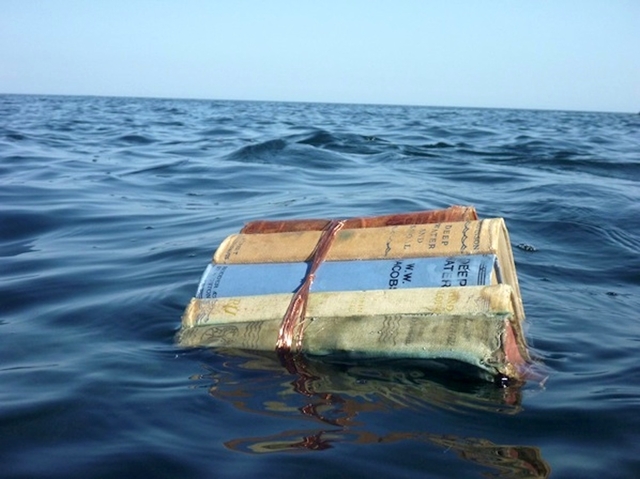Letter From the Editors
Off the Map
Aymara speakers from the southern Andes of Peru and Bolivia possess a unique spatial concept of time. To refer to the past, they point forward; when speaking of the future, they gesture over their shoulders. The idea is that because we can see it and know it, the past lays ahead of us. The future, which we don’t know, and cannot see, lurks behind.
From which it follows: When we walk forward, we walk towards the past.
To use the Aymara formulation of knowledge, this issue of The Appendix, ‘Off the Map,’ began way over our right shoulder. Initially, we meant it to be a ‘blank’ issue, one in which we didn’t tie the content together with a theme like ‘Illusions’ or ‘Out Loud.’ But when the articles started coming in, a more natural theme developed: one concerned with a different sort of geography, a geography of absence and hidden traces. We gathered pieces deeply concerned with how to look at history, and how to understand the motivations of the people who record it. And then there were the pieces that a grab-bag issue like this one truly does deserve, so distinctive that no other theme could fit them. Coming up on our one-year anniversary, it’s safe to say that ‘Off the Map’ is the most Appendix-y issue of The Appendix yet.
We begin with a sixteenth-century map of Mexico. Though commissioned to familiarize the king of Spain with his territories, the indigenous creator poured in his own local understanding of time and space, constructing a map filled with glyphs that harkened back to the pre-Columbian era. We puzzle over it, attempting to understand the mind that made it, just as our next author, a newly-minted historian, thinks through the smells that take her to work in a meat-packing town in Colorado. Another contributor wonders at the concrete laid over Houston’s urban past, trying to find stories in unassuming city blocks. As our article on a runaway slave named Jackson attests, landscape imprints itself on us just as we imprint upon it.
These pieces dwell on the displaced, the hidden, and the forgotten. A young White House photographer speaks up in a presidential meeting, contradicting Kissinger, but his objections drop out of the official version. A convicted murderer and a disgraced journalist sit in a prison cell in 1830s New York, crafting a story of loss and slavery that might even be true. A college student slips into St. Petersburg history obliquely, by way of a darkened stairwell and a midnight sun.
When we go off the map, we are forced to rely on our fellow travelers. We must figure out who to trust, and who can be trusted. It’s an old problem to have. An Appendix editor reveals an Enlightenment impostor who tried to convince London that he was from a bloodthirsty, fictional Taiwan—but was likely just a clever yet penniless Frenchman. Another historian traces the genealogy of the Nigerian email scam, taking it back to the Spanish prisoner letters of the nineteenth century. And in yet another article, we get into the trust of taste: why did eighteenth-century English aristocrats like to eat sea turtles so much?
Finally, we come to the line between fact and fiction, a line that, upon closer inspection, we paint ourselves. One of our contributors claims to have uncovered a CIA plot to fund an avant-garde translation of a novel by Herman Melville. Do you believe him? Another offers up a short fiction of death, gold, and speculation in nineteenth-century New York. And we go in-depth with an interview and a review of work in one medium, comics, that retraces the landscape of American Civil Rights. Congressman John Lewis has written a graphic memoir of his life, in which readers walk forward into the past he lived: we talk with the cartoonist whose pen gave that vision form.
As in other human societies, the Aymara mental universe uses space as metaphor; whether that implies a similar concern with distinction—between ‘here’ and ‘there,’ ‘us’ and them’—is unclear. The Greeks had their oikoumene, or ‘Inhabited World,’ the Chinese their Middle Kingdom, the Algonquians of North America their Turtle Island. These conceptions of place, and of community, were defined by the no-places around them—the sun-scorched wastes beyond the oikoumene, the barbarians ringing the Celestial Empire, the endless waters upon which the turtle floated.
As Jimmy Carter’s message from Earth in our ‘Letters to The Appendix’ attests, humans of the Space Age still hold to a form of that dichotomy: there’s the earth, and then the uncharted void around it. But not for much longer. We keep going forward—or backward—into the future, pushing up against the boundaries that delimit our worlds.
By going off existing maps, we create new ones: new ways of seeing, new ways to make sense of the terrain that overtakes us from the future and rears up ahead, from the past.


